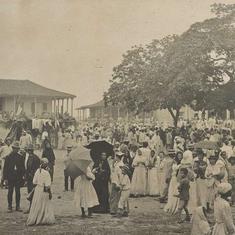Miscommunication (and nuclear war) between the US and India just got a lot less likely
War, nuclear or otherwise, between India and the United States is unthinkable. But it doesn't hurt to make that possibility even more remote. As India becomes the fourth nation to get a direct hotline into the White House, it uses a diplomatic protocol that was originally established to prevent nuclear war.
More than half a decade ago, the Cuban missile crisis took both the United States and Russia to the brink of war; a scary prospect less than two decades after the end of World War II, compounded by the nuclear-armed natures of the Cold War super powers. The negotiations in the aftermath of that crisis had both sides concluding they needed a secure means of direct communication between top officials and heads-of-state.
The direct line of communication known as Molink, short for Moscow link was established on Aug. 30, 1963. Though it was called direct and was generally thought of as a phone line, the original connection by telegraph was routed from Washington to London, then to Copenhagen and on to Stockholm with a hop to Helsinki before finally reaching Moscow. It proved to be an important mechanism for the United States and the Soviet Union to clarify their intentions to each other during the Cold War.
In the 1980s, the hotline with Moscow was characterized by The New York Times Magazine as “one of the atomic age’s great successes, permitting a succession of American and Soviet leaders to secretly defuse imminently explosive situations.”
Today's hotlines – Washington has ones with India, the United Kingdom and China in addition to Moscow – have much less to do with war. They're aimed at aiding secure communication between major nations and also function as a signifier of importance on the global stage.
Peter R Lavoy, Special Assistant to US President and Senior Director for South Asian Affairs at the National Security Council told PTI how today's hotlines aren't quite the same as the ones used in the 1960s: “Hotline has the connotation of some crisis-management phone or system that was used during the Cold War to defuse crisis but that’s not what we have. This is a secure line between two very, very close partners so that they can exchange views at the heads-of-state level.” He also added that this line will allow two leaders coordinate approaches to solving real problems.









